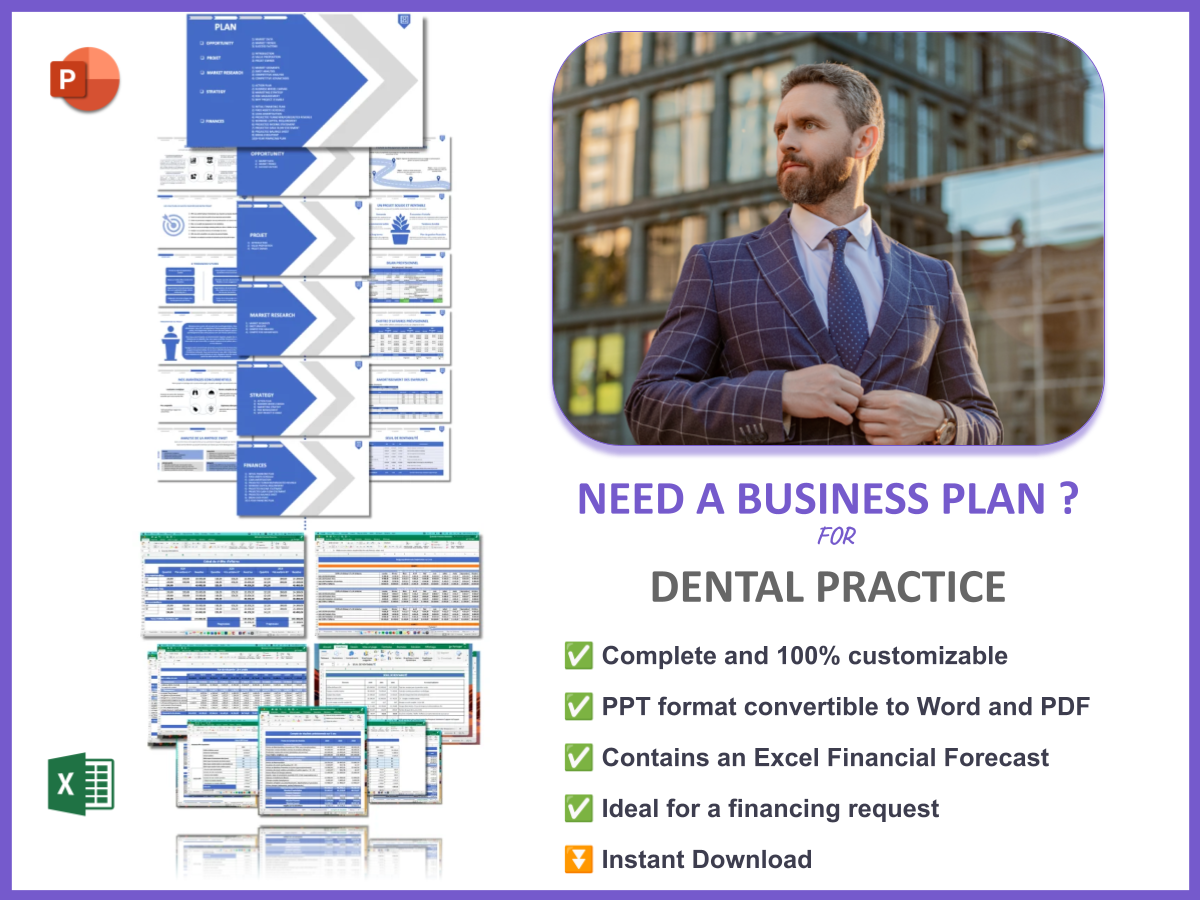Are you aware that nearly 70% of patients choose a dental practice based on its online presence? That’s a staggering statistic that highlights the importance of a well-crafted Dental Practice Marketing Plan. In today’s competitive landscape, having a clear and effective marketing strategy is not just beneficial; it’s essential for attracting and retaining patients. A Dental Practice Marketing Plan outlines your approach to reaching your target audience, showcasing your services, and ultimately driving growth for your practice.
In this article, we’ll dive into the key components of developing a successful Dental Practice Marketing Plan, including:
- Defining your target market
- Understanding your ideal customers
- Analyzing your competitors
- Establishing clear marketing objectives
- Choosing effective marketing strategies
- Evaluating and adjusting your approach
- Providing real-world examples to guide you
By the end of this guide, you’ll have a solid framework to create a marketing plan that works for your dental practice.
1. Define Your Dental Practice’s Target Market
| Step | Action | Details |
|---|---|---|
| 1 | Identify demographics | Age, income, location, etc. |
| 2 | Analyze patient needs | Specific dental services required |
| 3 | Research competitors | Understand their target market |
Understanding your target market is crucial for crafting an effective Dental Practice Marketing Plan. It starts with identifying the demographics of your potential patients. Consider factors like age, income, and location. For example, if your practice is in a family-oriented neighborhood, your target market may include young families seeking pediatric dentistry.
Next, analyze the specific needs of your patients. Are they looking for general dentistry, cosmetic procedures, or emergency care? Knowing this helps you tailor your services and marketing messages. Lastly, take time to research your competitors to see who they are targeting and how you can differentiate your practice.
2. Understand Your Ideal Customers
| Step | Action | Details |
|---|---|---|
| 1 | Gather patient data | Surveys and feedback |
| 2 | Create customer personas | Profiles of ideal patients |
| 3 | Identify motivations | Reasons for seeking dental care |
To effectively reach your audience, it’s essential to understand your ideal customers. Begin by gathering data from your current patients through surveys and feedback forms. This information can provide valuable insights into their demographics, preferences, and experiences.
Once you have this data, create detailed customer personas that represent your ideal patients. Consider their age, profession, lifestyle, and dental needs. For instance, a young professional might be seeking quick, efficient services due to a busy schedule, while a family might prioritize pediatric options and family-friendly environments.
Additionally, it’s important to identify what motivates your patients to seek dental care. Is it cosmetic improvement, preventive health, or perhaps pain relief? Understanding these motivations will allow you to create marketing messages that resonate with your audience, making your Dental Practice Marketing Plan more effective.
3. Analyze Your Competitors
| Step | Action | Details |
|---|---|---|
| 1 | List competitors | Local dental practices |
| 2 | Evaluate their marketing | Strategies and effectiveness |
| 3 | Identify gaps | Opportunities for your practice |
Analyzing your competitors is a critical step in developing a successful Dental Practice Marketing Plan. Start by listing out your local competitors. Who are the other dental practices in your area? What services do they offer, and who are they targeting?
Next, evaluate their marketing strategies. Look at their online presence, social media engagement, and advertising methods. Are they utilizing SEO effectively? How do they interact with their patients on social media? Understanding their approach can provide insights into what works and what doesn’t in your local market.
Finally, identify any gaps in their offerings. Is there a specific service or demographic they are not targeting? This could present an opportunity for your practice to fill that void and attract patients who are currently underserved. By differentiating your services and marketing approach, you can create a compelling Dental Practice Marketing Plan that stands out in the competitive landscape.
4. Establish Clear Marketing Objectives for Your Dental Practice
| Step | Action | Details |
|---|---|---|
| 1 | Set SMART goals | Specific, Measurable, Achievable, Relevant, Time-bound |
| 2 | Prioritize objectives | Which goals matter most? |
| 3 | Align with practice vision | Ensure goals fit practice values |
Establishing clear marketing objectives is essential for guiding your Dental Practice Marketing Plan. Start by setting SMART goals. This means your objectives should be Specific, Measurable, Achievable, Relevant, and Time-bound. For example, instead of saying “increase patients,” a SMART goal would be “increase new patient registrations by 25% over the next six months.”
Once you have set your goals, prioritize them based on what matters most to your practice. Consider which objectives will have the most significant impact on your growth. For instance, if you’re launching a new service, focusing on awareness and patient acquisition might take precedence.
Lastly, ensure that your marketing objectives align with the overall vision and values of your dental practice. This alignment will not only motivate your team but also resonate with your patients, making your marketing efforts more authentic and effective. With clear objectives in place, you’re on your way to crafting a robust Dental Practice Marketing Plan that drives success.
5. Choose Effective Marketing Strategies for Your Dental Practice
| Step | Action | Details |
|---|---|---|
| 1 | Evaluate channels | Social media, SEO, email |
| 2 | Implement strategies | Content marketing, ads |
| 3 | Monitor effectiveness | Analytics and feedback |
Choosing effective marketing strategies is a pivotal part of your Dental Practice Marketing Plan. Begin by evaluating various marketing channels. Consider platforms like social media, search engine optimization (SEO), and email marketing. Each channel has its strengths, and the right mix will depend on your target audience and objectives.
Once you’ve identified potential channels, it’s time to implement specific strategies. For instance, you could create engaging content for your website that educates patients about dental health, which not only enhances SEO but also establishes your authority. Additionally, consider using targeted ads on social media platforms to reach a broader audience. You can promote special offers or new services to attract attention.
Finally, monitoring the effectiveness of your strategies is crucial. Utilize analytics tools to track engagement, conversion rates, and overall performance. Regularly review this data to understand what’s working and what isn’t. This will allow you to refine your Dental Practice Marketing Plan continually, ensuring it remains effective and relevant.
6. Evaluate and Adjust Your Dental Practice’s Approach
| Step | Action | Details |
|---|---|---|
| 1 | Review performance | Analyze metrics |
| 2 | Solicit feedback | From staff and patients |
| 3 | Make necessary adjustments | Adapt strategies as needed |
Regular evaluation is key to a successful Dental Practice Marketing Plan. Start by reviewing your performance metrics. Analyze data from your marketing efforts to determine which strategies are yielding the best results. This could include website traffic, patient inquiries, and appointment bookings.
In addition to data analysis, solicit feedback from both your staff and patients. Understanding their perspectives can offer invaluable insights into how your practice is perceived and what improvements can be made. Consider conducting surveys or informal check-ins to gather their thoughts.
After gathering and analyzing all this information, it’s time to make necessary adjustments. Adapt your strategies based on what you’ve learned. For instance, if a particular marketing channel isn’t performing as expected, consider reallocating your resources to more effective channels. By continually refining your approach, you ensure your Dental Practice Marketing Plan remains aligned with your goals and responsive to your market’s needs.
7. Example N°1 of Marketing Plan for a Dental Practice
| Steps | Actions | Details |
|---|---|---|
| 1 | Target Market | Families with children |
| 2 | Ideal Customers | Parents aged 30-45 |
| 3 | Competitors | Local pediatric dentists |
| 4 | Marketing Objectives | Increase new patients by 20% |
| 5 | Marketing Strategies | Social media ads, community events |
| 6 | Evaluation | Monthly performance reviews |
This first example of a Dental Practice Marketing Plan focuses on attracting families with children. The target market is identified as parents aged 30-45 who are looking for a pediatric dentist. To differentiate from local competitors, the practice aims to increase new patient registrations by 20% within six months.
To achieve this, the marketing strategies include running targeted social media ads that highlight the practice’s family-friendly environment and hosting community events such as free dental check-up days for kids. Monthly performance reviews will help in evaluating the effectiveness of these strategies, ensuring that the marketing plan is on track to meet its objectives.
8. Example N°2 of Marketing Plan for a Dental Practice
| Steps | Actions | Details |
|---|---|---|
| 1 | Target Market | Young professionals |
| 2 | Ideal Customers | Individuals aged 25-35 |
| 3 | Competitors | Nearby dental offices |
| 4 | Marketing Objectives | Grow online appointments by 30% |
| 5 | Marketing Strategies | SEO and email campaigns |
| 6 | Evaluation | Quarterly analytics review |
This second example illustrates a Dental Practice Marketing Plan aimed at young professionals, specifically individuals aged 25-35. The goal is to grow online appointment bookings by 30% over the next quarter, targeting a demographic that values convenience and digital engagement.
To accomplish this, the practice will focus on enhancing its SEO to ensure that it appears prominently in search results when potential patients are looking for dental services. Additionally, email campaigns will be implemented to keep the audience informed about promotions and new services. A quarterly analytics review will allow the practice to assess the effectiveness of these strategies and make necessary adjustments as needed.
9. Example N°3 of Marketing Plan for a Dental Practice
| Steps | Actions | Details |
|---|---|---|
| 1 | Target Market | Seniors |
| 2 | Ideal Customers | Individuals aged 60+ |
| 3 | Competitors | Local geriatric dentists |
| 4 | Marketing Objectives | Increase referrals by 15% |
| 5 | Marketing Strategies | Community workshops, referral incentives |
| 6 | Evaluation | Patient feedback surveys |
This third example presents a Dental Practice Marketing Plan aimed at seniors, particularly individuals aged 60 and above. The objective is to increase patient referrals by 15% over the next year, focusing on a demographic that may require specialized dental care.
To achieve this, the practice will conduct community workshops that educate seniors about dental health and the importance of regular check-ups. Additionally, referral incentives will be offered to current patients who bring in new clients. To gauge success, patient feedback surveys will be implemented to understand the effectiveness of the workshops and referral program.
10. Example N°4 of Marketing Plan for a Dental Practice
| Steps | Actions | Details |
|---|---|---|
| 1 | Target Market | New parents |
| 2 | Ideal Customers | Parents with infants |
| 3 | Competitors | Nearby family dentists |
| 4 | Marketing Objectives | Boost new patient registrations by 25% |
| 5 | Marketing Strategies | Social media parenting groups |
| 6 | Evaluation | Tracking social media engagement |
This fourth example showcases a Dental Practice Marketing Plan that targets new parents, specifically those with infants. The goal is to boost new patient registrations by 25% over the upcoming year, tapping into a market that is often in search of pediatric dental care.
To reach this audience, the practice will engage with local parenting groups on social media, sharing informative content about infant dental health and offering special promotions for first-time visits. To evaluate the effectiveness of these strategies, the practice will track social media engagement and monitor the number of new registrations resulting from these efforts.
11. Example N°5 of Marketing Plan for a Dental Practice
| Steps | Actions | Details |
|---|---|---|
| 1 | Target Market | College students |
| 2 | Ideal Customers | Students aged 18-24 |
| 3 | Competitors | Local dental clinics |
| 4 | Marketing Objectives | Increase patient visits by 40% |
| 5 | Marketing Strategies | Discounted services, campus events |
| 6 | Evaluation | Monitor attendance at events |
This fifth example highlights a Dental Practice Marketing Plan aimed at college students, specifically individuals aged 18-24. The goal is to increase patient visits by 40% within the academic year, targeting a demographic that often overlooks dental care due to busy schedules.
To attract this audience, the practice will offer discounted services for students and participate in campus events to promote dental health awareness. These initiatives will not only provide value but also create a strong connection with the student community. To evaluate success, the practice will monitor attendance at these events and track the number of new patients who take advantage of the discounts.
12. Example N°6 of Marketing Plan for a Dental Practice
| Steps | Actions | Details |
|---|---|---|
| 1 | Target Market | Working professionals |
| 2 | Ideal Customers | Individuals aged 30-50 |
| 3 | Competitors | Corporate dental providers |
| 4 | Marketing Objectives | Enhance patient loyalty by 20% |
| 5 | Marketing Strategies | Loyalty programs, flexible scheduling |
| 6 | Evaluation | Patient retention rates |
This sixth example showcases a Dental Practice Marketing Plan that targets working professionals, specifically individuals aged 30-50. The objective is to enhance patient loyalty by 20% over the next year, focusing on a demographic that values convenience and reliability.
To achieve this, the practice will implement loyalty programs that reward returning patients and offer flexible scheduling options to accommodate busy work schedules. By creating a patient-centric environment, the practice aims to build long-term relationships with its clients. Evaluation will be based on monitoring patient retention rates and gathering feedback on the new initiatives.
13. Example N°7 of Marketing Plan for a Dental Practice
| Steps | Actions | Details |
|---|---|---|
| 1 | Target Market | Local residents |
| 2 | Ideal Customers | Families and individuals |
| 3 | Competitors | Nearby dental offices |
| 4 | Marketing Objectives | Increase brand awareness by 50% |
| 5 | Marketing Strategies | Community sponsorships, local ads |
| 6 | Evaluation | Community engagement metrics |
This final example of a Dental Practice Marketing Plan targets local residents, including families and individuals. The goal is to increase brand awareness by 50% over the next year, focusing on building a strong local presence.
To achieve this, the practice will engage in community sponsorships, such as local sports teams and events, and run advertisements in local publications. These strategies aim to establish the practice as a trusted and familiar name in the community. Evaluation will be based on community engagement metrics and the overall impact on patient inquiries and visits.
Conclusion
In conclusion, developing a comprehensive Dental Practice Marketing Plan is essential for attracting and retaining patients in today’s competitive landscape. By understanding your target market, analyzing your competitors, and implementing effective marketing strategies, you can create a successful plan that drives growth for your practice.
If you’re looking for a more structured approach, consider checking out this business plan template for Dental Practice that can streamline your efforts. Additionally, to further enhance your knowledge, you may find our articles on How to Launch a Dental Practice? and How to Create a SWOT Analysis for Dental Practice incredibly valuable. These resources will help you build a strong foundation for your dental practice and ensure your marketing strategies are effective.
FAQ
- What is a Dental Practice Marketing Plan?
A Dental Practice Marketing Plan is a strategic document that outlines the marketing efforts and strategies a dental practice will implement to attract and retain patients. It includes identifying target markets, setting marketing objectives, and choosing effective strategies. - Why is marketing important for dental practices?
Marketing is crucial for dental practices to differentiate themselves in a competitive market, increase brand awareness, and attract new patients. Effective marketing can also enhance patient loyalty and retention. - What strategies can be used in a Dental Practice Marketing Plan?
Common strategies include SEO, social media marketing, email campaigns, community engagement, and referral programs. Each strategy should be tailored to the specific target audience and practice objectives. - How can I evaluate the effectiveness of my marketing efforts?
Evaluate your marketing effectiveness by tracking key performance indicators (KPIs) such as patient inquiries, appointment bookings, website traffic, and engagement on social media. Regular reviews and feedback can also provide valuable insights. - What role does social media play in dental marketing?
Social media is a powerful tool for dental marketing, allowing practices to engage with patients, share educational content, and promote services. It helps build a community and fosters relationships with current and potential patients. - How can I improve patient retention in my dental practice?
Improving patient retention can be achieved through loyalty programs, excellent patient care, consistent communication, and personalized experiences. Regular follow-ups and feedback can also enhance patient satisfaction. - What is the best way to attract new patients?
Attracting new patients can be accomplished through targeted advertising, community involvement, referral incentives, and maintaining a strong online presence. Utilizing local SEO can also help potential patients find your practice easily. - How often should I update my marketing plan?
Your Dental Practice Marketing Plan should be reviewed and updated at least annually or whenever significant changes occur, such as new services, shifts in the market, or changes in patient demographics. - What is the importance of community engagement for dental practices?
Community engagement helps build trust and relationships with potential patients. It enhances brand awareness and positions the practice as a community-focused provider, which can lead to increased referrals and patient loyalty. - How can I use patient feedback to improve my marketing?
Patient feedback can provide insights into what is working and what needs improvement. Use surveys and reviews to gather information, then adjust your marketing strategies and services based on this feedback to better meet patient needs.







